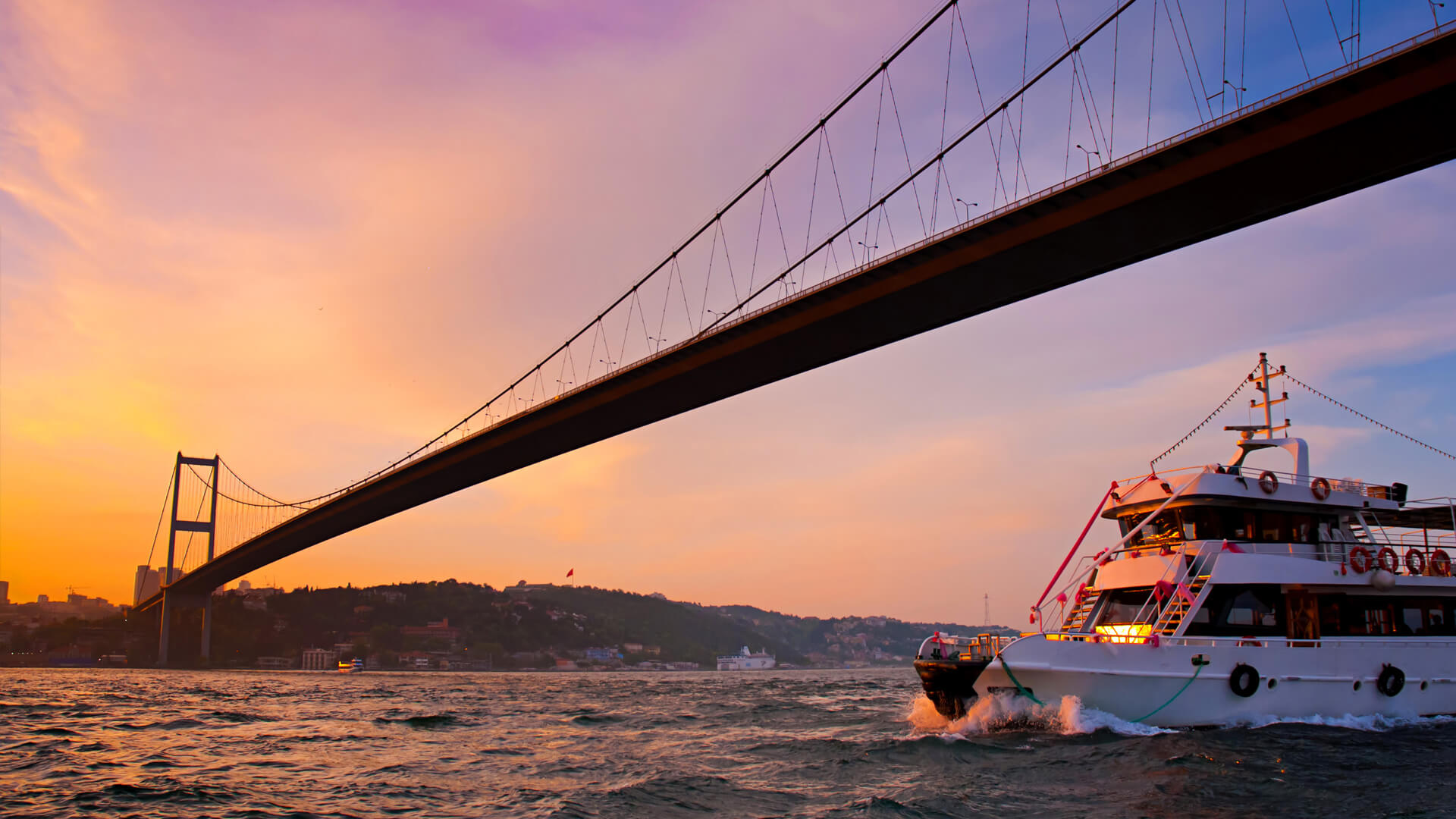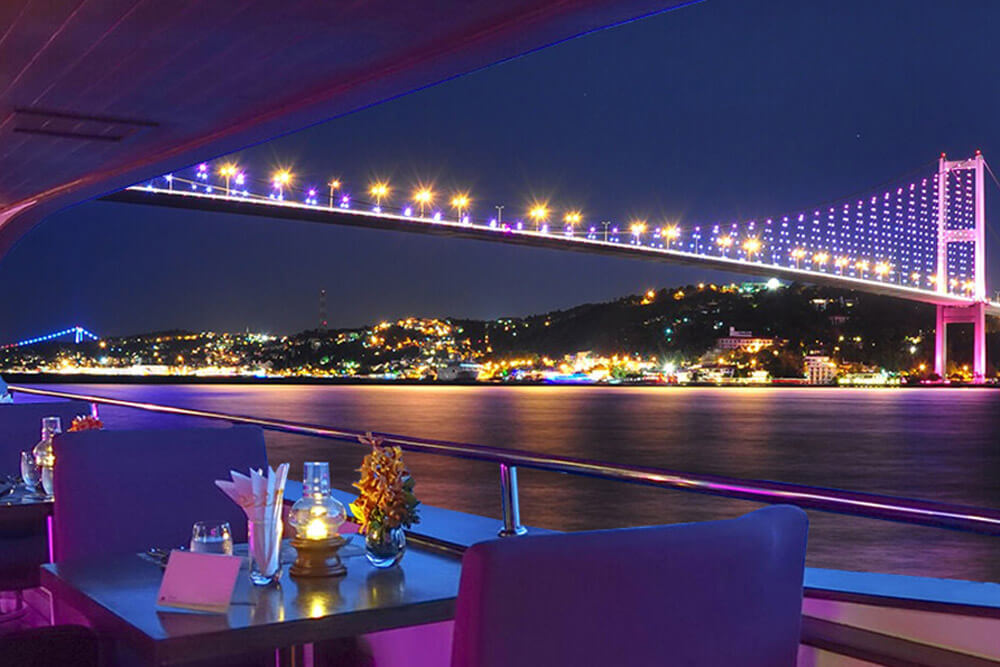Bosphorus

Bosphorus
The Bosphorus, which connects the Black Sea to the Marmara Sea, is also known as the “Black Sea Bosphorus”. The two shores of the Bosphorus are called Bosphorus. This important waterway separates Asia from Europe with the Dardanelles and connects the Black Sea and the Mediterranean.
The Bosphorus of Istanbul is formed by the waters that have been opened by rivers, about 2.5 million years ago. The coasts on both shores of the Bosphorus are the lower parts of the sea floods of the small river valleys that opened this old valley. Golden Horn is the most important of these.
The distance from one end to a tip is 30 km, when measured from the ground, it is 35 km near Anatolia and 55 km near Rumeli. The shores are quite indented and the length of the Bosphorus is about half the length of the Dardanelles. The narrowest part of the Bosphorus lies between 700 and 700 meters between Anatolian Fortress and Rumeli Fortress. The largest area is between the Anatolian Lighthouse and the Rumeli Lighthouse, reaching 3,600 meters. The underwater part of the Bosphorus is in the form of a groove in the deepest league of 50 meters. The deepest place is 110 meters in front of Rumeli Fortress.
The water level of the Marmara Sea is slightly lower than the Black Sea. Because of the difference between the two seas, salinity and density, the upper and lower currents were formed in the Bosphorus, as well as in the Dardanelles Strait. The waters of the Black Sea pass to the Marmara in the form of an upper stream; From there, the Çanak fortress reaches the Aegean and the Mediterranean via the Bosphorus. The average speed of the upper stream, which is 40 meters above the Black Sea and 20 meters above the Sea of Marmara, exceeds 5 kilometers per hour. The north-south upward current creates reverse currents in the coils located behind the noses. This state of the upper stream reverses when strong southern winds are blowing. With these winds, the swollen water of Marmara Sea enters the bosphorus and the upper stream merges with the lower stream and takes the south-north direction. At the same time, the direction of the reverse currents in the river also changes. This so-called orchosis occurs every year in the Bosphorus of Istanbul, and the salty and dense waters of the Mediterranean Sea pass through the Aegean Sea, then the Dardanelles, and reach the Sea of Marmara. This sub-stream follows the Bosphorus to the Black Sea. As a result of the violent blowing of the winds coming from the north, the velocity of the upper stream reaches 10 kilometers an hour and the Black Sea waters that cover the throat swell away from the Marmara to the north. The amount of water passing through the Black Sea by the lower stream is half of the amount of water passing through the Sea of Marmara with the upper stream.
The rich waters rich in oxygen and nutrients that pass through the Sea of Marmara with the upper stream of the Black Sea,
Creates a versatile environment. It is a very fertile water for fishery because the Bosphorus is on the way of migratory fishes. However, unplanned structuring in the Bosphorus and shipyards, workshops such as factories, the intensive flood of wastes cause pollution of the shores of the Bosphorus. Because of this reason, there are no more fish in this waters than the old ones and they do not come here for the purpose of migration. The Bosphorus, which has preserved its importance throughout history, is a water that is of international importance today. The transition from the Bosphorus to the Black Sea and the Marmara Sea is under the control of Turkey.
Between the towns of the Bosphorus and the city center, small passenger ferries connected to City Lines provide access to various small boats and boats operated specially. One of the Anatolian and Rumeli peaks of the Bosphorus is connected to two suspension bridges opened to service in 1973 and the other in 1988.
There was no significant settlement on the shores of the Bosphorus, an important waterway in terms of access to trade colonies established in the Black Sea coast in the early ages. During the Byzantine period, several small villages in the Bosphorus were dealt with by fishing and agriculture. When the Anatolian and Rumeli fortresses were established, new villagers were established besides the old Greek villages in the Bosphorus which gained importance from the military point of view. Starting from the 17th century, pavilions and boats were built in the Bosphorus. Among the Bosphorus settlements that started to develop in the 19th century, there were gardens and promenade places. With the start of the ferry service, residential areas that have been permanently seated in the districts of the Bosphorus have become widespread. The construction of roads during the Republican period was a factor that encouraged the construction of the Bosphorus. The widespread use of some industrial establishments after 1950 led to the beginning of gecekondi in Bosphorus. The Bosphorus, which is filled with various sites, block houses and villas, has lost its unique natural beauty to a great extent nowadays.





No Comments